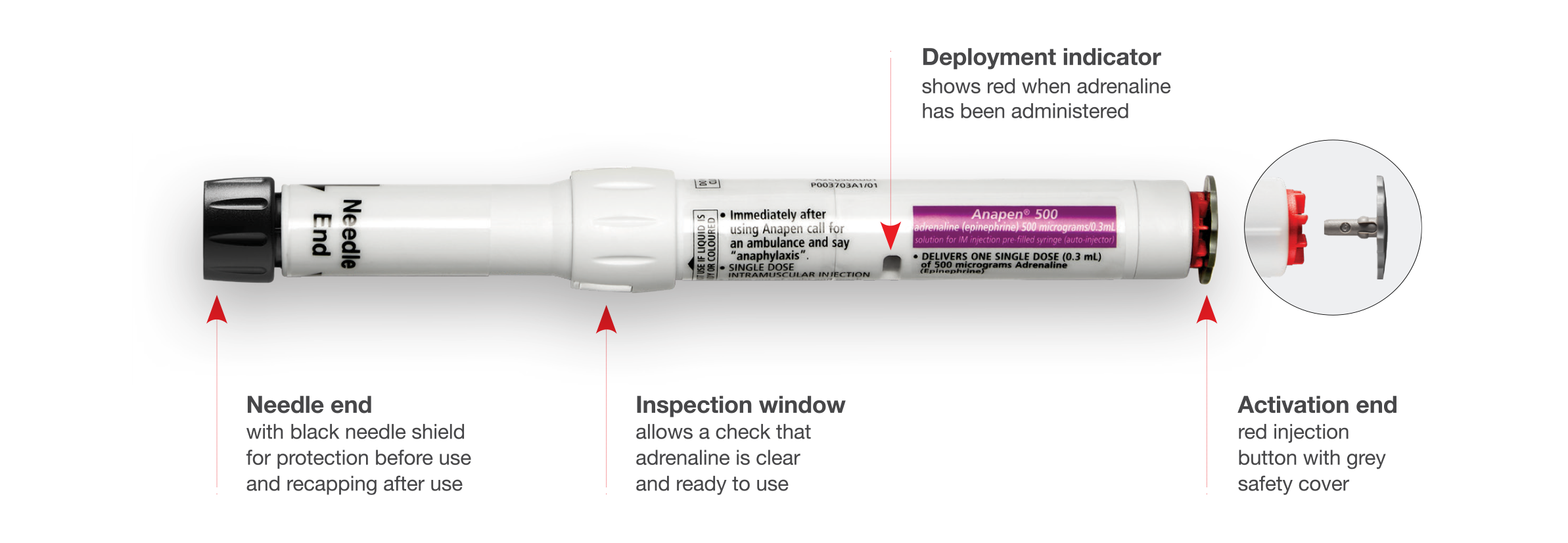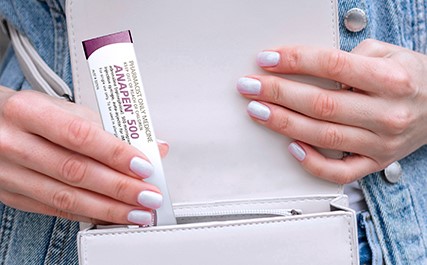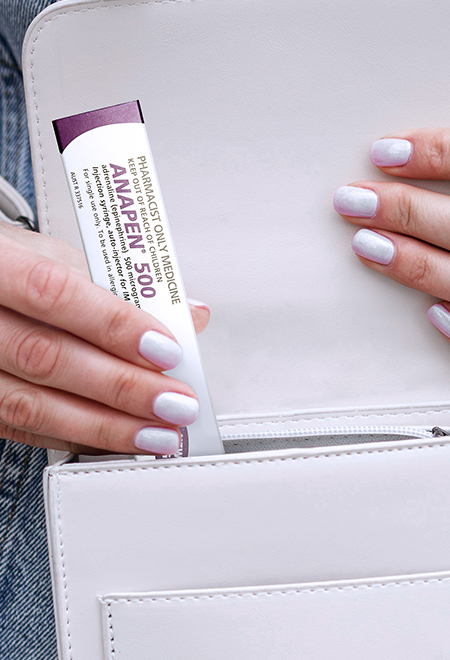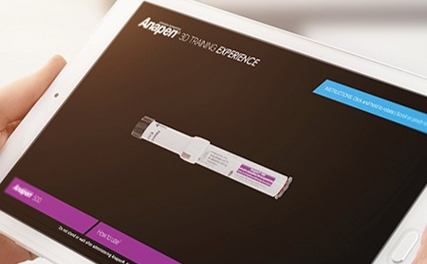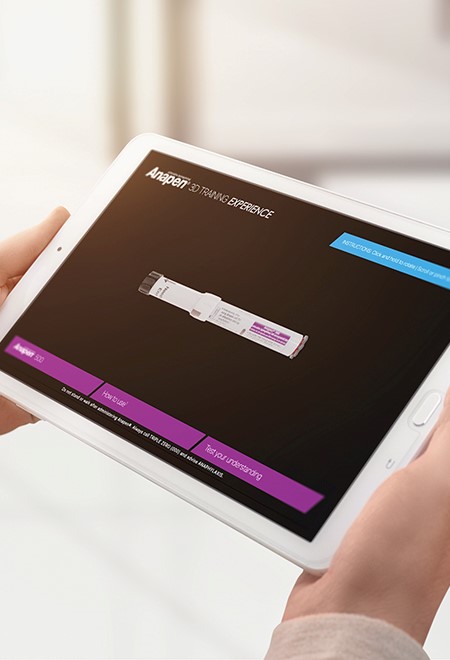Adrenaline Autoinjector
for the emergency treatment of anaphylaxis
Understand what Anapen® is and when to use it
Learn moreLearn how to administer Anapen® in 4 steps
Learn moreExplore each Anapen® device in 3D and test your knowledge
Learn moreQuestions you might have about Anapen®
Learn more
What is Anapen® and what is Anapen® used for?
Anapen® is an adrenaline autoinjector for the emergency treatment of anaphylaxis, or acute severe allergic reaction.
Acute, severe, allergic reaction can occur from insect stings, drugs or other allergens. For many, food can be an allergen.
Anapen® should be administered intramuscularly immediately on the appearance of the signs and symptoms of anaphylaxis or anaphylactic shock. These may occur within minutes of exposure to the allergen.
If you or a family member has been diagnosed with anaphylaxis, the thought of using an Anapen® adrenaline autoinjector may make you nervous, but Anapen® is administered in just four steps and there are a range of resources to help you to be confident to use it.
Anapen training devices are available and there is an online 3D training experience where you can interact with the device, watch it being used, practice the steps yourself and test your understanding of how to use.



Common signs and symptoms of anaphylaxis include:
- Difficult and/or noisy breathing
- Swelling of the tongue
- Swelling/tightness in the throat
- Wheeze or persistent cough
- Difficulty talking and/or hoarse voice
- Persistent dizziness or collapse
- Pale and floppy (young children)
Anapen® Doses
Anapen® is available in 3 different doses. Each dose has a different colour label, so they are easily distinguished. Anapen® Junior 150 has a green label, Anapen® 300 an orange label and Anapen® 500 is purple.
Your healthcare professional will decide which dose is right for you.


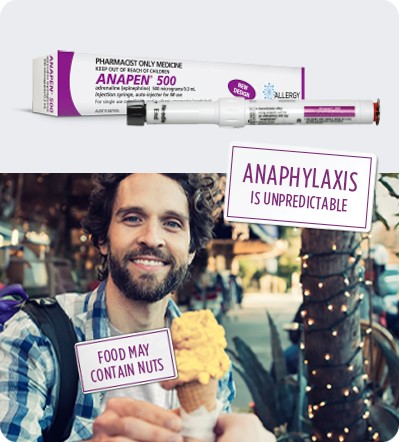
The Anapen® Device
The Anapen® device has a straightforward design with four main parts.
There is a needle end, with label and arrow pointing to it. The other end has the red firing button. When not in use, the red button is covered by a grey safety cap.
In addition, there is an inspection window and a deployment indictor. Adrenaline should be clear, colourless and not cloudy. The inspection window allows the user to check this. After use, the deployment indictor shows red, confirming the adrenaline has been administered.
Labels on the device give instructions on how to use as well as general advice, batch, and expiry information.
